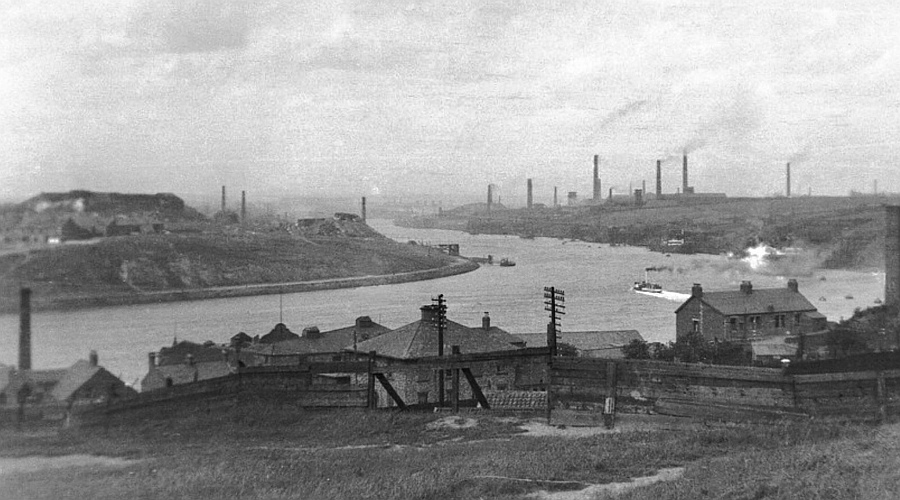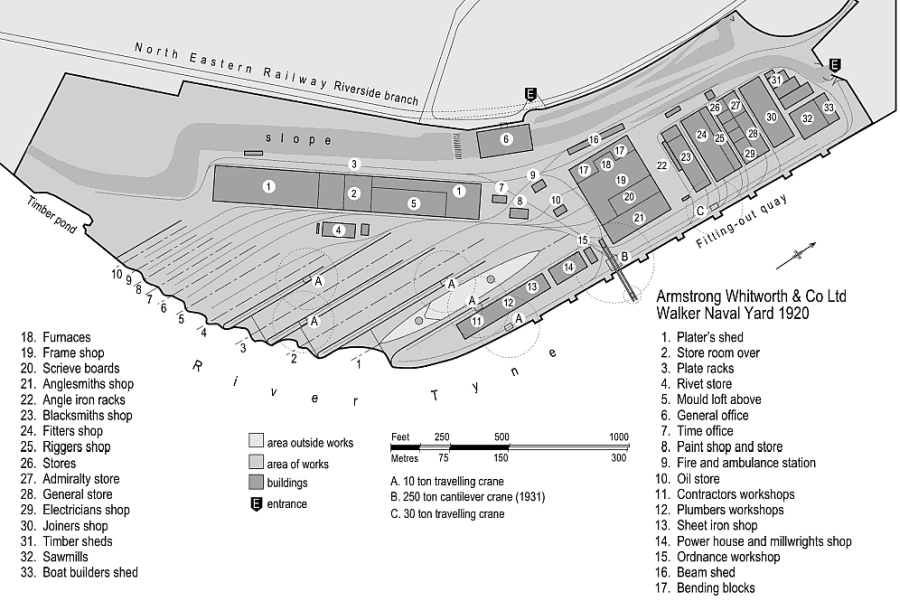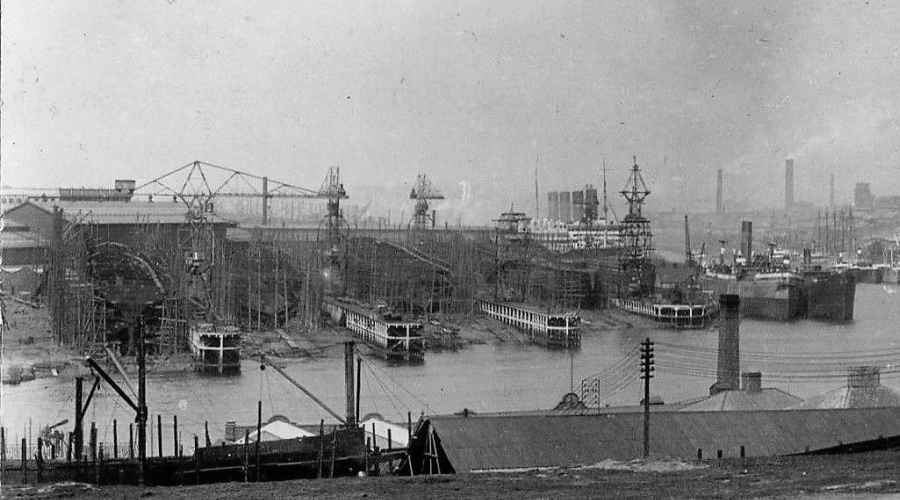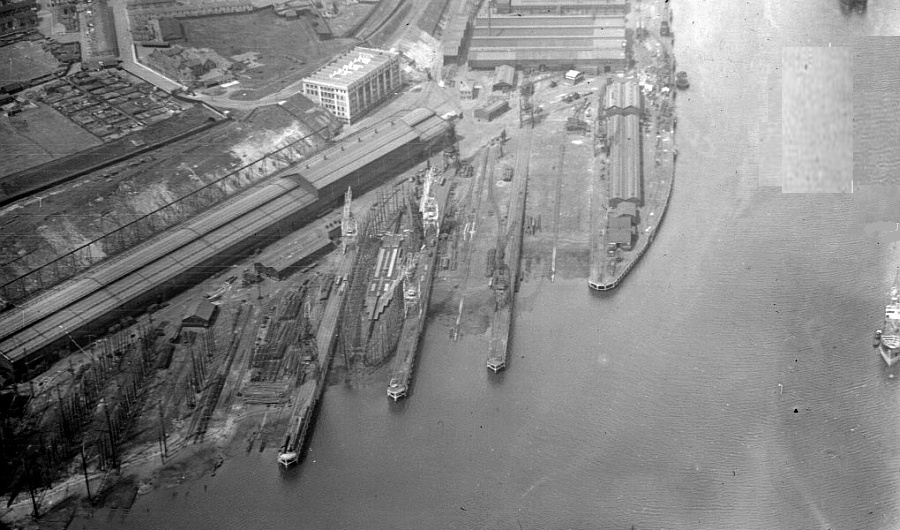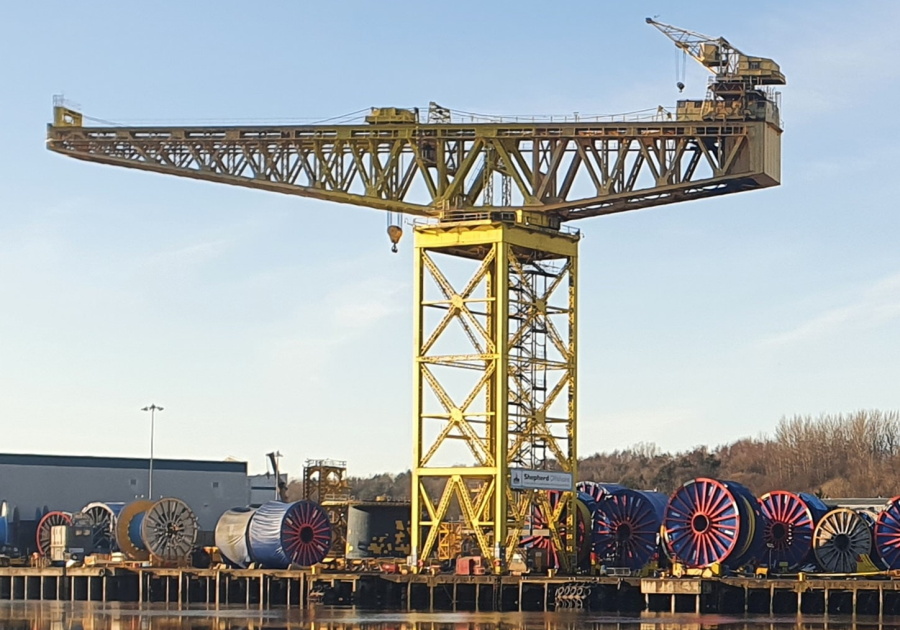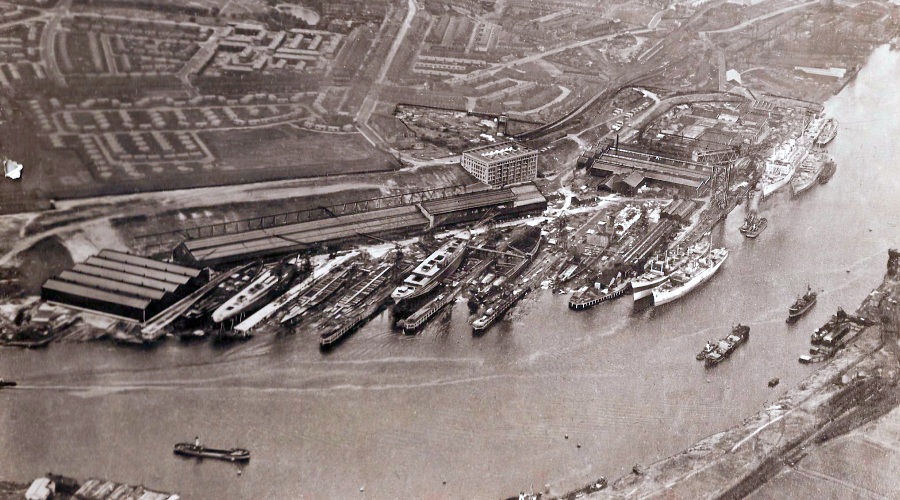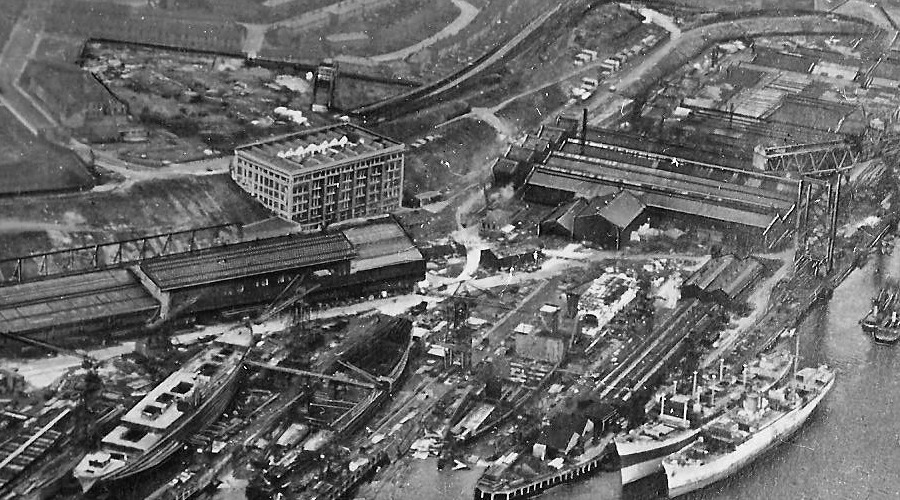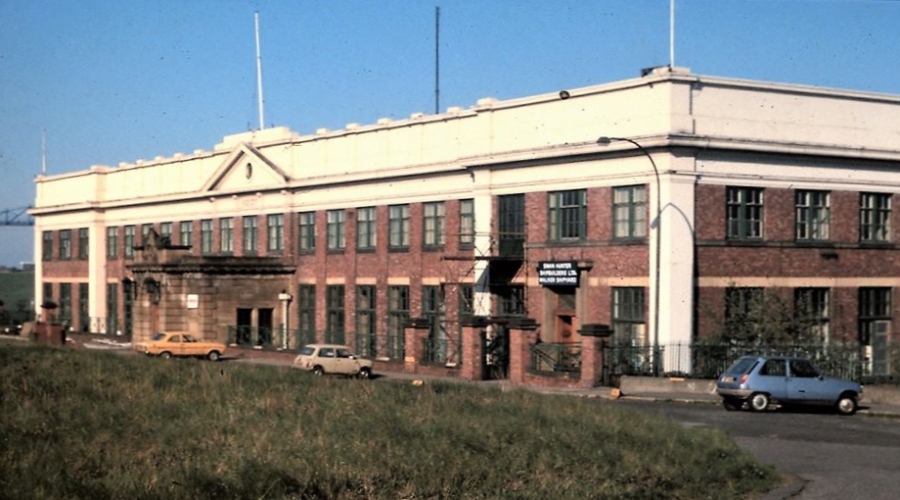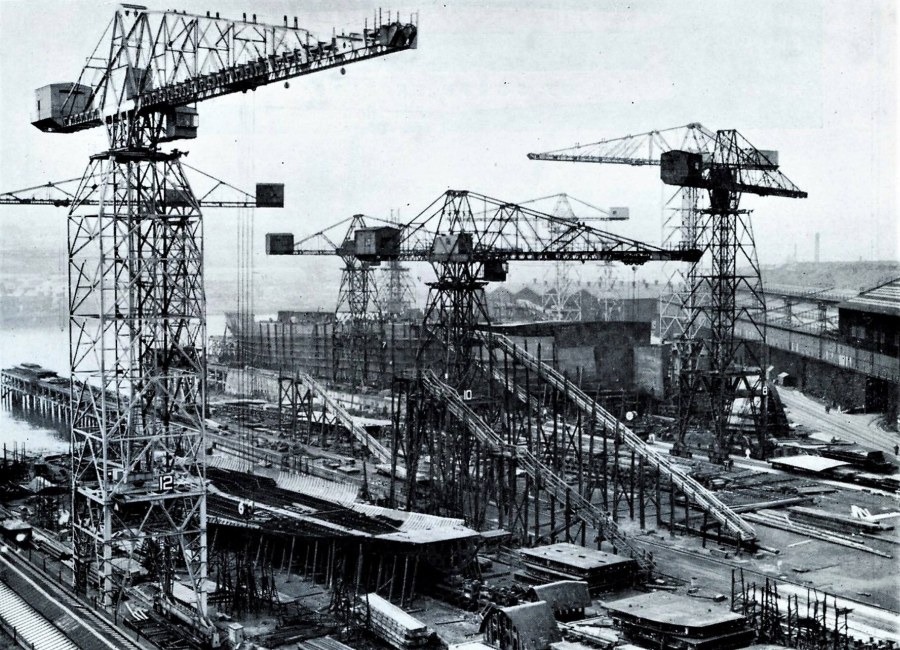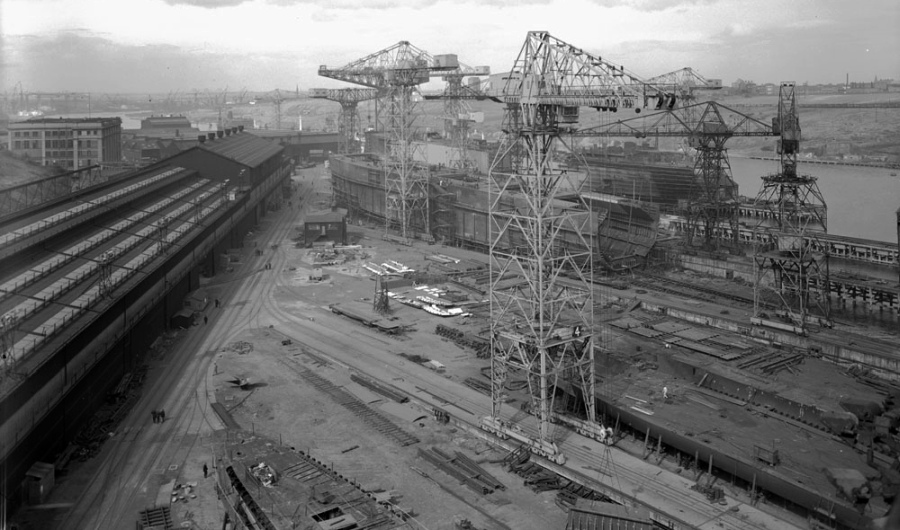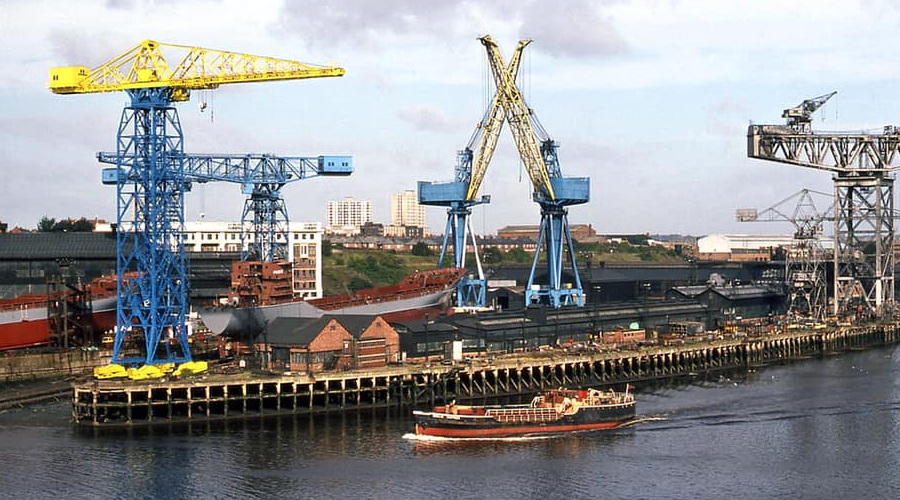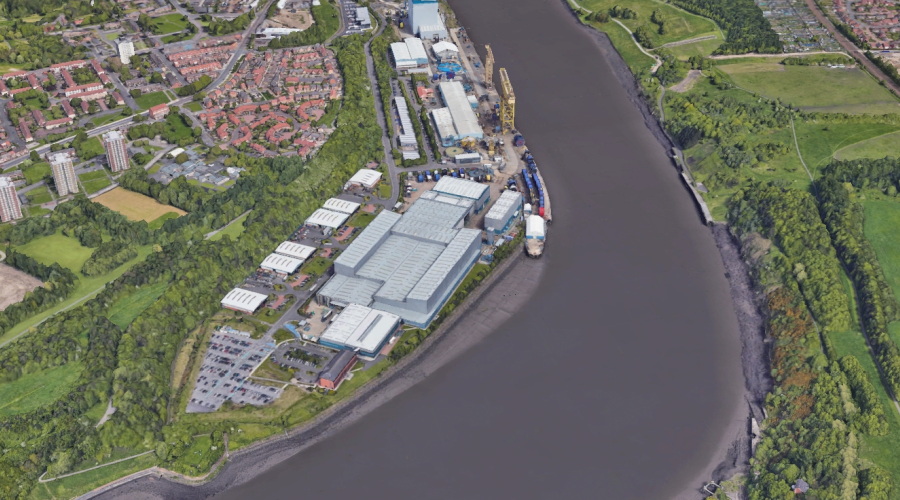|
Armstrong Whitworth was the pre-eminent armaments manufacturer in the UK at the beginning of the 20th century with armament works at Elwick in Newcastle and Openshaw in Manchester and two shipyards on the Tyne, one at Elswick and the other at Low Walker.
However warships and especially capital ships such as battleships and battlecruisers were steadily increasing in size and both of these yards were very constrained especially in terms of the length of the berths they had available.
The Elswick works was additionally constrained by being sited above the bridges at Newcastle which provided restrictions on both the height and width of vessels that could pass.
Additional restrictions imposed by the Admiralty were that any yards buolding capital ships needed to have at least a depth of 30ft of water at the outfitting quay and a Royal Navy ship could not lie alongside a foreign warship while being outfitted which was a common occurrence at Elswick.
A temporary solution to fitting out nearly completed ships was to take them to a small quay at High Walker and also to moor vessels in midstream at the river bend near Bill Quay which was actually the widest part of the river Tyne. Both of these proved to be very expensive in terms of backwards and forwards traffic betwen where the ship was berthed and Elswick. The Armstrong Whitworth board looked at taking over other Tyne shipbuilders and even considered relocating to another part of the country but eventually settled on developing a completely new yard at High Walker.
Above photo shows the site of the future High Walker yard, on the other side of the river, viewed from Bill Quay, in about 1905 The High Walker site was not green fields, parts of it had been used for an iron works, a gas works and a chemical works in the past and it was generally at a higher level than required, up to 70ft above the river in places, however it could all be excavated to the levels required. The new yard would end up costing about £1 million but would provide 10 building berths, two of which were capable of building the largest ships, 1000ft x 120ft and 900ft x 110ft. There was also space for an outfitting quay which was capable of berthing 3 battleships end to end. The first keel was laid on berth no 3 on 20/10/1913, this was to be the battleship MALAYA. The opening of the the Armstrong Yard at High Walker, but better known as the Walker Naval Yard, took pressure off the Elswick yard and allowed redevelopment of the slipways so that longer ships could be accommodated there as well.
The above yard plan is courtesy of Johnston & Buxton.
Above photo shows the High Walker yard, viewed from Bill Quay, in about 1920
Above photo shows the High Walker yard, viewed from above Bill Quay, in about 1935 A lean spell for ship building during and around the depression years just after WW1 meant yards throughout the country were closed down. The Elwick yard was closed in 1920 and production was transferred to the Naval Yard. However a disastrous investment in a Newfoundland Power & Paper making facility in 1925 nearly brought the whole of the Armstrong company down and it was only saved by a "shot gun" merger with Vickers of Barrow which was completed in 1928. The new company was called Vickers-Armstrongs and Vickers were in the driving seat.Vickers-Armstrongs then aquired the Dobson yard, which was in between the High and Low Walker yards. But naval orders were in very short supply and the Vickers-Armstrongs board placed the few orders that they won at the Barrow works and the Naval yard was closed in 1928. Merchant ship orders were plentiful for a short time and in 1928 the Willington Quay yard was purchased but this surge in orders was short lived and this yard closed in 1931 followed closely by the Low Walker yard in 1932. The High Walker yard had been shut for almost three years between April 1928 and March 1930 when the yard was prepared for the construction of the passenger liner MONARCH OF BERMUDA. At the same time there was investment for future capital ship orders that the company was sure would be announced in the near future. One of the heaviest items to be installed on a battleship were the complete gun turret assemblies, weighing some 100 tons or more. So in 1930 Vickers-Armstrongs invested in a 250 ton hammerhead crane on the fitting out quay to cope with all foreseeable lifts.
Above photo is copyright of Barry Hill The crane was completed by March 1931 at a cost of £93,000 and was used to fit out MONARCH OF BERMUDA which was launched that same month. This crane which is still in use today was manufactured by Sir William Arrol & Co Ltd in Glasgow.However the respite was short lived and without further orders for the High Walker yard it was closed again in November 1931 and remained closed until May 1934 when it was prepared for the laying of the keel of the HMS NEWCASTLE.
Above photo shows the High Walker yard, viewed from above Bill Quay, in about 1946. Photo is courtesy of Ian Rae
Above photo shows the High Walker Office Block, in the centre of the photo, viewed from the river side. Photo is courtesy of Ian Rae
Above photo shows the High Walker Office Block, viewed looking towards the river. Photo is courtesy of John Bage
Above photo shows the yard, viewed from the top of the office block, in the 1950s. Photo is courtesy of John Bage
Above photo shows the yard, viewed from the top of a riverside crane in 07/1962. Photo is courtesy of John Bage In the post war period, Vickers embarked on a modernisation programme at their Newcastle yard in order to prepare for prospective work on passenger and cargo vessels. See High Walker Modernisation. (Use browser BACK button to return). Then in 1968 the High Walker yard formed part of the merger deal made between Vickers and Swan Hunter Shipbuilders when a new company, Swan Hunter and Tyne Shipbuilders Ltd came into being. The 18 percent share holding that Vickers had in this group was sold at the end of 1969 and with it control of the Walker Yard passed to the Swan Hunter Group.
Above photo shows the yard in 1978 with ROYAL PRINCE & CROWN PRINCE nearing launch. Photo is courtesy of Peter Shearer The last ship built at the High Walker yard was the DUNEDIN, completed in July 1980 and after that the site was used as an outfitting base for the rest of the group. This arrangement came to an end in 1985 with the completion of ILLUSTRIOUS.
Above photo shows the site redeveloped as the Offshore Technology Park. Photo is copyright of Google UNDER CONSTRUCTION Use the browser BACK button to return |
